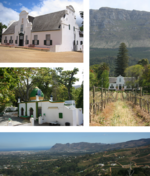Tokai Arboretum

The Tokai Arboretum was the first large-scale silviculture experimental station in Cape Town, South Africa. The area of the main Arboretum, at Tokai Park, is 14 ha. Several adjacent compartments extend the area to 26 ha. The Arboretum was declared a National Monument in 1985, on its 100th anniversary. It contains stands of Eucalyptus and other trees from the original silviculture experiments in South Africa. In the 1990s a Gondwana Garden was created to display the plants typical of the Cape 100 million years ago.The Tokai Arboretum is a collection of trees of different sizes, established without a silvicultural or arboricultural plan (lack of open vistas, swards, shrubberies and beds of flowers to display the trees). Tokai Arboretum has stands of Karri (Eucalyptus diversicolor), Scribbly Gum, Jarrah (Eucalyptus marginata), Redwoods (Sequoioideae), Aleppo Pines (Pinus halepensis), Stone Pines (Pinus pinea) and many other tree species. There are about 28 trees in the main Arboretum with record heights for South Africa. The main Arboretum at Tokai is the oldest wholly government financed arboretum in South Africa. Following the establishment of the main Arboretum, three lesser arboreta were initiated at Tokai Plantation, namely the Paddock Arboretum (on infertile sands of the Cape Flats), the Spekboom Belt Arboretum (on fertile granite slopes) and the Flagstaff Arboretum. The latter was soon abandoned.
Excerpt from the Wikipedia article Tokai Arboretum (License: CC BY-SA 3.0, Authors, Images).Tokai Arboretum
Tokai Road,
Geographical coordinates (GPS) Address Nearby Places Show on map
Geographical coordinates (GPS)
| Latitude | Longitude |
|---|---|
| N -34.0596694 ° | E 18.4167583 ° |
Address
Tokai Manor House
Tokai Road
7806 , Cape Town Ward 71
Western Cape, South Africa
Open on Google Maps









